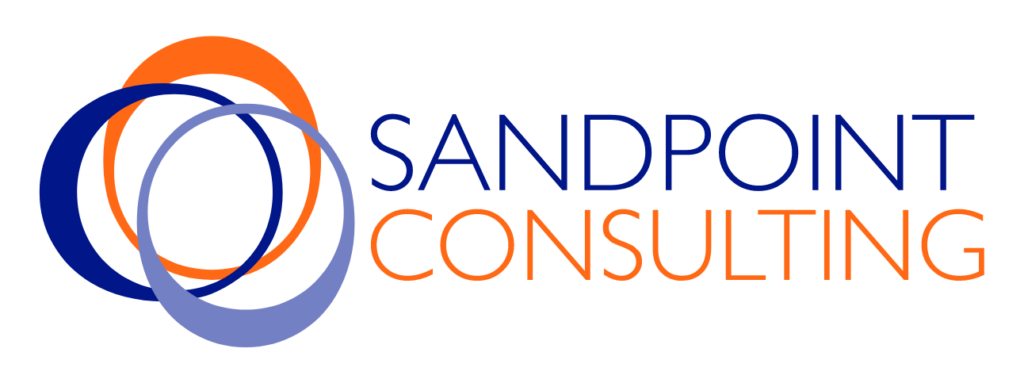
When finance teams look to modernize, we hear one question over and over:
“Why do we need another system if our ERP already handles accounting?”
It’s a fair question. After all, major ERPs like SAP, Oracle, and NetSuite are built to manage core financial processes–posting transactions, maintaining the general ledger, and producing financial statements.
But here’s the difference:
ERPs are built to record the numbers. They’re not built to manage the work behind them.
That means the team still completes tasks like assigning responsibilities, tracking deadlines, and ensuring reconciliations on time outside the ERP—using spreadsheets, email, and shared folders.
BlackLine fills the gap. It provides a structured way to manage accounting workflows and automate time-consuming tasks, while improving visibility, control, and consistency.
This article looks at how ERPs and specialized tools like BlackLine work together and where each one shines.
Note: ERP stands for Enterprise Resource Planning. The software is designed to manage core financial processes, such as posting transactions, maintaining the general ledger, and producing financial statements.
ERP and BlackLine: What’s the difference?
Here’s a simple way to think about it:
- Your ERP is where the data lives. It records journal entries, manages ledgers, and generates reports.
- BlackLine is where the accounting team gets work done. It organizes the month-end close, automates reconciliations, tracks ownership and deadlines, and enforces approvals.
While ERPs focus on storing and processing data, BlackLine helps accounting teams manage and control the processes around that data.
ERP vs. BlackLine: A Functional Comparison
| Function | ERP | BlackLine |
|---|---|---|
| General Ledger Management | ✓ Core function | ✗ Relies on ERP as system of record |
| Journal Entry Storage | ✓ Stores entries | ✓ Stores entries with workflow, approval, and audit trail |
| Account Reconciliation | ⚠ Manual (usually outside ERP) | ✓ Centralized, rule-based, and automated |
| Transaction Matching | ⚠ Possible in some modules, often custom | ✓ Purpose-built, high-volume automation |
| Close Task Tracking | ✗ Typically tracked in spreadsheets | ✓ Real-time task visibility, ownership, deadlines |
| Audit Trail | ⚠ Basic, limited to entries | ✓ Comprehensive logs of user actions and approvals |
| Real-Time Close Visibility | ⚠ Financial data may be live, but task status and progress are not tracked | ✓ Dashboards show status of all close activities |
| Automation Rules | ✗ Minimal or requires customization | ✓ Built-in automation for recurring tasks |
Bottom line: Your ERP is a system of record. BlackLine is a system to manage the work behind the numbers.
What BlackLine Adds to the Tech Stack
BlackLine is purpose-built for accounting operations. It standardizes processes, automates manual work, and strengthens controls–without replacing your ERP.
Here’s what BlackLine adds:
1. Account Reconciliation Automation
BlackLine tracks every account in one place with a designated owner, reviewer, due date, and status. Rules-based auto-certification reduces time spent on low-risk accounts.
2. Automated Transaction Matching
BlackLine can match transactions using rules you define–for example, for cash, credit cards, intercompany, or clearing accounts. The system now completes what used to take days in minutes
3. Close Task Management
With BlackLine, your month-end checklist becomes a living workspace. Assign tasks, set deadlines, and track progress across the team in real time. This visibility helps teams stay aligned and avoid last-minute surprises.
4. Journal Entry Workflow
BlackLine provides a structured journal entry process. Teams can prepare entries, route them for approval, and post them to the ERP after review. Templates help standardize recurring entries, and a full audit trail ensures transparency.
5. Compliance and Audit Support
BlackLine logs every action, providing a clear audit trail. Supporting documents can be attached directly to reconciliations or journal entries, so there’s no need to dig through folders during an audit. Review steps and approvals are visible and easy to verify.
When Is the Right Time to Add BlackLine?
Certain patterns often signal that it’s time to move beyond manual close processes. Some common signs include:
- Close timelines are slipping, or teams are working overtime to meet deadlines
- The number of accounts and reconciliations is growing
- Excel and email are being used to track tasks, approvals, and deadlines
- Audit prep takes weeks, and supporting documents are scattered
- New hires struggle to get up to speed without standardized processes
- Close checklists live in Excel or SharePoint, and no one knows what’s done
- Reconciliations are tracked manually across dozens or hundreds of accounts
- Errors are caught late–often by auditors
Many teams wait until these problems become too big to ignore. But putting the right structure in place earlier can help prevent delays, reduce errors, and improve morale.
Without structure, even the best ERP can’t prevent delays, missed steps, or compliance risks.
How BlackLine Works with Your Existing Tech Stack
BlackLine connects with your ERP to create a seamless accounting workflow. The integration process is designed to be low-impact on IT and easy to maintain.
Here’s how it typically works:
- Financial data flows from the ERP into BlackLine automatically, either through secure flat files, APIs, or pre-built connectors
- Reconciliations, journals, and close tasks are completed in BlackLine, using data from your ERP
- Users can post completed journal entries back to the ERP, keeping everything aligned
- BlackLine can also connect to other systems, such as bank platforms, subledgers, and reporting tools
This setup allows teams to work more efficiently without re-entering data or jumping between disconnected tools. Everything remains tied to your ERP as the system of record, but the work becomes structured, visible, and auditable.
BlackLine and ERP: Better Together
BlackLine complements your ERP by bringing automation, accountability, and visibility to your accounting processes. It pulls in financial data and provides a place for your team to manage the work around the numbers. When the two systems work together, teams can close faster, reduce risk, and focus more energy on analysis and strategy.
Final Thoughts: It’s Not ERP vs. BlackLine–It’s ERP + BlackLine
For accounting teams buried in spreadsheets and deadlines, BlackLine offers a smarter way to work—without overhauling your entire tech stack. It helps accounting teams reduce manual work, enforce controls, and gain real-time visibility into the close. It’s not about choosing between your ERP and a specialized tool. It’s about using the right tool for the right job.
If your close process is becoming harder to manage, now may be the right time to explore how tools like BlackLine can help your team work smarter. Our team has helped leading organizations, like Kraft, transform their accounting operations with BlackLine. Get started today.
FAQs
Can BlackLine replace my ERP?
No. BlackLine is not a replacement for your ERP—it complements it. Your ERP remains the system of record where transactions are posted and stored. BlackLine adds structure, automation, and visibility to processes like reconciliations, journal entries, and close task tracking that typically happen outside the ERP.
Is BlackLine only for large enterprises?
Not necessarily. While BlackLine is used by many large and complex organizations, it’s also a good fit for midsize companies that are growing in complexity or struggling with manual close processes. If your team is spending too much time in spreadsheets or finding it hard to maintain controls, BlackLine could add value regardless of company size.
How long does it take to implement BlackLine?
Implementation timelines vary based on scope, complexity, and how many modules you’re adopting. A focused rollout (such as account reconciliations only) may take a few months. However, teams often complete more comprehensive implementations in phases.
Does BlackLine support SOX compliance?
Yes. BlackLine includes features that support internal controls and audit readiness, including role-based access, task certification, workflow approvals, and audit trails. It provides visibility into the status of reconciliations and journals, helping organizations meet SOX and other compliance requirements more easily.
What integrations does BlackLine support?
BlackLine can integrate with most major ERP systems, either through flat-file imports, APIs, or certified connectors. It can also connect with subledgers, bank platforms, and reporting tools to bring in the data required for reconciliations and journal entries. The goal is to create a seamless connection between your source systems and accounting workflows.
Does BlackLine work with SAP?
Yes. BlackLine has certified integrations with SAP, including S/4HANA and ECC. It’s also offered as part of SAP’s Accounting Add-ons by BlackLine, a pre-integrated solution that extends SAP’s native capabilities with standardized reconciliation and journal automation.
Do I need BlackLine if I use NetSuite?
That depends on your current processes. While NetSuite includes some workflow and reporting capabilities, many organizations using NetSuite still rely on spreadsheets for reconciliations and close management. If your accounting team is spending too much time on manual tasks or struggling to maintain control and visibility, BlackLine may be a useful addition.
Does BlackLine help with audit prep?
Yes. By centralizing reconciliations, journal entries, and supporting documentation in one place—with built-in approval workflows and audit trails—BlackLine can significantly reduce the time and effort required to prepare for audits.



